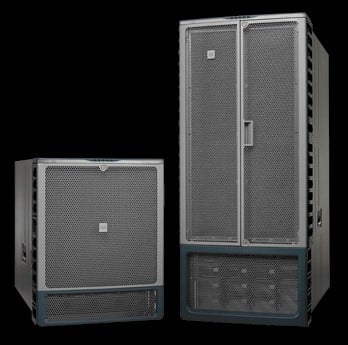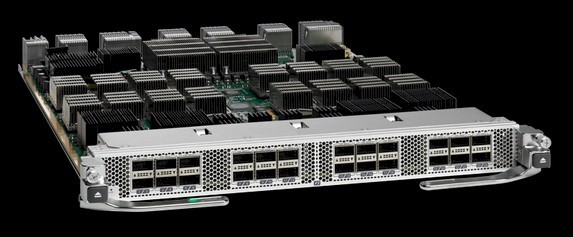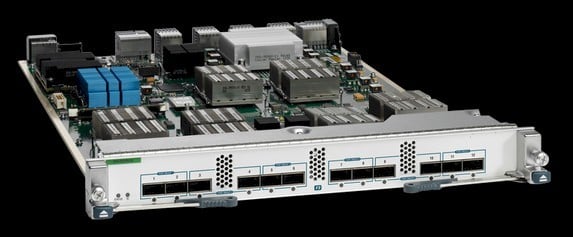Customer Success Testimonial: Recovery is Everything
Cisco has, like other switch makers, Gradually been refreshing its product line to boost bandwidth from 10Gb/sec up to 40Gb/sec 100Gb/sec and speeds, and at the Cisco Live extravaganza today in Orlando, Florida, the networking trotted OUT A new top-end Nexus 7700 sports lineup que new ASICs and offers a more compact design than the current Nexus 7000s, Which only sport 10Gb/sec ports.
Well, at least until today, that is. In addition to rolling out new modular, end-of-row Nexus 7700 switches, Cisco is Also creating a new set of line cards for the Nexus 7000s to give Them fatter pipes based on the same-F3 series ASICs.
AlsoThe company is touting the new cloud-friendly set of tools que will help automate the provisioning and management of network resources, all under the umbrella of marketing Centric Application Infrastructure.
First, let’s look at the shiny new Nexus 7700 iron. There are two new models of these modular monsters. The first is the Nexus 7710, Which has ten slots in the front for I / O modules, plus two half-width slots supervisor in the center of the chassis. (You can not see the line cards or the cards Them supervisor behind the closed doors in the picture below.)
The Nexus 7710 has an aggregate of 42Tb/sec of switching capacity across Those eight line cards, and you can divvy it up in a number of ways. You can have 96 ports running at speeds 100Gb/sec, or 192 ports at 40Gb/sec. And if, for some reason, you want to load it up with 10Gb/sec que line cards are based on the early F2 generation ASICs used in the original Nexus 7000 modular switches, you can cram eight I / O modules in there with a full of 384 ports in the 14U rack-mounted chassis.

The Nexus 7700 switches modular pack more oomph in a smaller package
The Nexus 7718 is the bigger, badder modular switch, and it comes in a 26U enclosure que sports sixteen I / O module slots plus the two supervisor modules for managing the switch. With double the I / O modules, the Nexus 7718 can cram twice as many ports into slightly less than twice the space used by the Nexus 7710. That’s a whopping 768 10Gb/sec ports, 40Gb/sec ports 384, 192 and 100Gb/sec ports, to save you doing the math.
The new Nexus boxes sport front to back airflow, Which Is the customer requirement and now data centers do not have to mount the switches backwards in the racks or try to cool the switch from the hot Aisles in the data center and dump hot air in the cool Aisles meant to keep servers and storage from overheating.
Shashi Kiran, senior director of data center, cloud and open networking at Cisco, tells El Reg que the new Nexus 7700 series of modular switches have about 2.5 times the throughput of the machines They Nexus 7000 replace, and take about 33 per cent less rack space as well and Significantly, the new F3 chassis design ASICs and burns 60 per cent less power.
These are some big numbers, and the ones que more than 8,000 customers who have bought more than 40,000 Nexus 7000 enclosures are going to take a hard look at.
 The
The F3 Nexus 7700 24-port line card 40Gb/sec
The Nexus 7710 and 7718 modular switches will be available in July, and will run the NX-OS 6.2 network operating system. INITIALLY They will ship with a 48-port 10Gb/sec F2E I / O module. The Nexus 7710 costs $ 30,000 enclosure buck naked, with the supervisor modules costing $ 40,000 a pop and an AC power supply (one per line card) costs $ 3,000 in for AC power and DC power in 8000 U.S. dollars. The network fabric module costs $ 18,000 for the 7710 and $ 27,000 for the 7718. And finally, the 48-port line card 10Gb/sec will run you $ 40,000.
Two other I / O modules will ship in the fourth quarter. The 24-port 40Gb/sec F3 I / O module has 960Gb/sec of aggregate throughput and can process 1:44 billion packets per second of Layer 2 and 3 forwarding.
With a fully loaded Nexus 7718 chassis, these cards can pack 30.7Tb/sec of switching throughput and chew through 23 billion packets per second. The 7718 chassis has been designed to deliver the much 83Tb/sec of switching capacity, and Thus is future proof and can easily take 200Gb/sec line cards Should they come to fruition.
 The 12-port
The 12-port F3 100G line card for the Nexus 7700 switches
The F3 100G line card is the capacity aggregates On those ASICs and gives a dozen big fat pipes with 100Gb/sec of bandwidth and Also Those ASICs revs up a bit so They can process 1.8 billion packets per second of Layer 2/3 forwarding and deliver 1.2 Tb / sec of throughput. Cisco Nexus 7718 says que loaded up with this grunting line cards has 28.8 billion packets per second of forwarding and 38.4Tb/sec of aggregate switching.
Both the40Gb/sec 100Gb/sec and line cards support all the modern and cloudy Necessary protocols for data centers, including Virtual Extensible LAN (VXLAN) and Locator / ID Separation Protocol (LISP). Also customers can use Overlay Transport Virtualization (OTV), Multiprotocol Label Switching (MPLS) and Virtual Private LAN Service (VPLS) Their data centers to link to each other using Nexus 7700 switches. Data center linking is one big use of the Nexus 7000 Series modular switches, and so is end-of-row aggregation.
Cisco expects to have these two F3 line cards for the Nexus 7700 switches available in the fourth quarter. Pricing was not available because it has not yet been September. The 12-port 40Gb/sec F3 I / O module que will slide into the existing Nexus 7000 series modular switches Also will come out in the fourth quarter and Cisco will roll out a six-port module F3 100Gb/sec early next year.
In Conjunction with the new switches, Cisco’s top brass are articulating a vision of network management Broader que goes beyond software-defined networking and into what the company is calling Application Centric Infrastructure. (Heaven help us, another nebulous term to try to remember.)
The basic gist isque the Nexus switch fabrics get larger and larger and have multi-tenancy as well as scale, you need management tools que nonetheless think at the application level, not down in the gobbledygook of network devices because application performance, in the end, is what matters.
The first element of this Application Centric Infrastructure is a bit of software called Dynamic Automation Fabric, Which can scale up to 10,000 tenants or networks, mobility for virtual and physical networks, and the distributed control plane to deliver que scalability as well as network resiliency.
This software, Which is coming out later this year, will be able to span various kinds of physical and virtual switches and server virtualization hypervisors and has APIs so it can hook into existing system and network management tools as well as cloud controllers.
The idea is to Provide a single policy framework for Automating the setting up of networks, security, and application layers in the network, Cisco has done much the inside of its Unified Computing System modular systems. ®
Ensure Ease of Recovery with Asigra’s agentless software
No comments:
Post a Comment